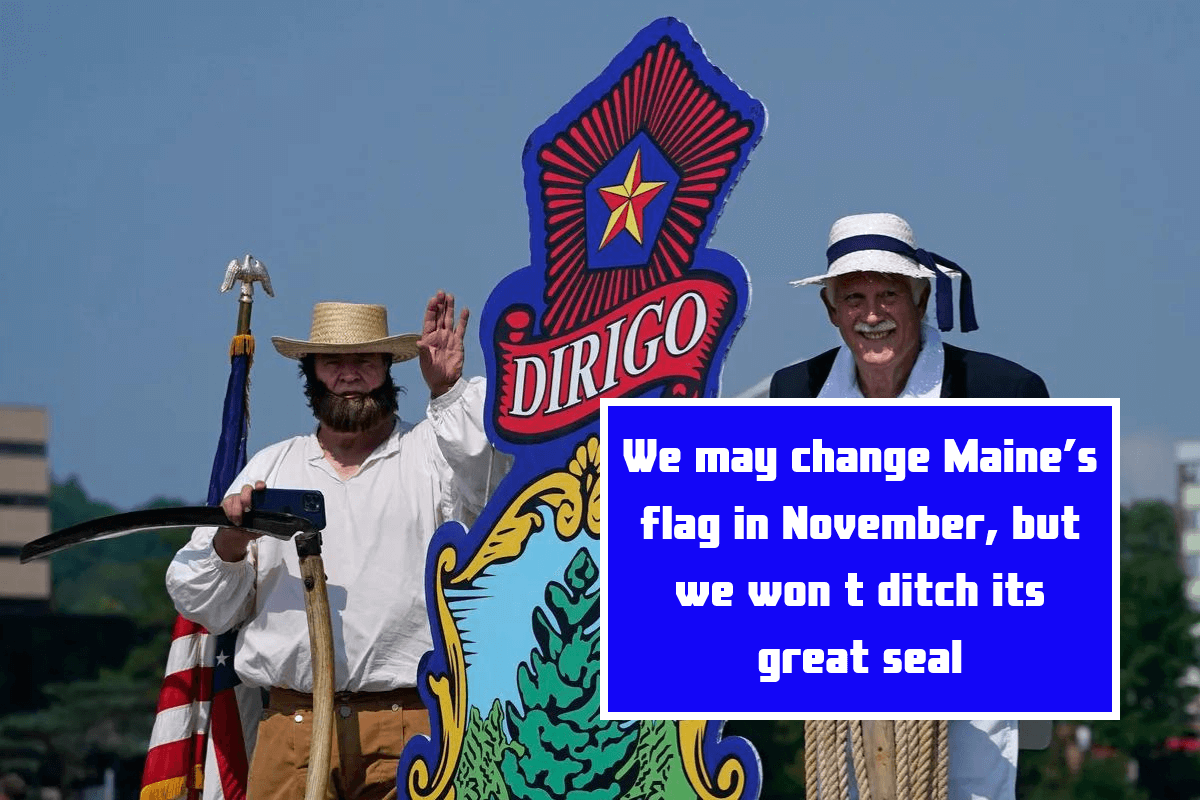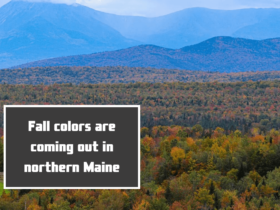Hard Telling Not Knowing answers your burning questions about Maine culture and history, old and new, big and tiny, essential and silly, each week. Email queries to eburnham@bangordailynews.com.
The main argument for adopting the 1901 “lone pine” design for Maine’s state flag is that the present flag — the Maine state seal on a blue backdrop — is uninteresting.
The design is similar to 15 other state flags. Maine’s flag is hard to spot without squinting. Proponents argue the “new” design—the first state flag, used from 1901 to 1909—is more recognized with its basic but evocative pine tree and star.
It would set us apart from New Hampshire and Vermont, which both have seal-on-blue flags. Utah and Minnesota changed their flags this year, so we wouldn’t be the first.
The seal isn’t uninteresting, but the flag change argument rarely mentions it. It’s quite cool.
As Maine became a state in 1820, Bertha Smouse, a teenage Waldoboro resident, and her stepfather, Col. Isaac Reed, a Maine militiaman, lawyer, and politician, designed the Great Seal.
Reed wrote out the seal’s parts in early 1820, and Smouse made a needlepoint sampler of the design. Needlework, a “ladylike” activity that taught girls patience and attention and prepared them for marriage and motherhood, was one of the few educational possibilities for girls in the early 19th century. Sad to say, Smouse’s needlepoint sampler is gone.
Reed presented Smouse’s sampler to the new Maine State Legislature. On June 9, 1820, the Great Seal was adopted when British-American politician and Hallowell resident Benjamin Vaughn added a formal drawing.
Reed explained in 1820 that the shield’s parts were symbolic, but his heraldic vocabulary is unfamiliar to most people. He claimed the pine tree was the “staple of the commerce of Maine, as the pride of her forests” and its “beauty is exceeded only by its usefulness.”
Reed stated the north star symbolized Maine’s status as the northernmost state. It relates to Dirigo, the state motto, meaning “I lead.” Reed noted that the north star “has been considered the mariner’s guide and director,” “used to denote the point to which all affections turn and as it here is intended to represent the state.”
Reed called the farmer and sailor “husbandman” and “seaman” to represent the state’s main industries: agriculture, fishing, and shipping. Maine residents in the 19th century likely lived off the land or sea. Not as true today as 200 years ago.
Reed calls the moose “moose deer.” A moose deer is not an antlered Bigfoot prowling Maine’s woods. In 1820, European-descended Maine residents called moose what Wabanaki people had called it for thousands of years. They dropped “deer” for “moose.”
As the moose “retires before the approaching steps of human [habitation],” Reed said it symbolizes Maine’s untouched wilderness, much as humans who would populate those lands had a “spirit of independence [that] shall be untamed.” Pretty nice, huh?
The state flag of Maine was adopted in 1901, 80 years after its creation. Maine utilized the “lone pine” flag for 8 years, which Mainers can vote on in November. Maine state archivist Kate McBrien says there is no record of why it was changed to the current flag in 1909. It happened one day.
If voters accept the original flag on Nov. 5, the Great Seal of Maine won’t change. It will remain on state documents and signage. It will symbolize our state’s history, ideals, natural beauty, and place in the union. It’s been used since Maine’s founding and won’t change.
Only that the seal will no longer be on a blue backdrop and flown from flagpoles. Proponents believe we’d use something else to emphasize Maine’s uniqueness. How we live, believe, and the soil beneath us is distinct.











Leave a Reply